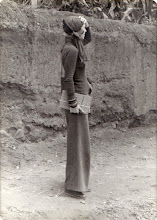"The writing gets older with each passing moment as the artifact gets newer." - Dave Hickey on art criticism, Air Guitar
The art depends on the art discourse, yet immediately transcends it. Criticism and theory are instantly history, yet the works simply join the catalogue of all art once the writing has deemed them art. Capturing the fleeting experience of art allows its reference but only masquerades as its definition. A visual or even conceptual work of art may be timestamped, but it is presented as fresh to each new eye that meets it, while the published text, once set and finalized, out of the reach of editing, is banished to the archive of subjectivity. What is it that grants the visual experience greater immediacy than the written account of the same experience? Dave Hickey describes the destruction of the subject matter as both the method and the death sentence of the literary mission.
Art media, the eternal visual and written brandishing of the artworld discourse, attempts to redeem the ever-shortening lifespan of its relevance, its anachronism faced with the out-of-time reaches of its subject matter, by multiplying its sources and covering and re-covering and discovering and re-discovering and de-coding and re-coding art works, concepts, and performances. Not to say that the discourse is not enlightening, clarifying, edifying, illuminating, or even complete, I think the overabundance of art media publications speaks to our realization that the realm of written discourse is a finite one and that history's dark depths are infinite for those who don't get it right. And not to say that the form is not beautiful, inspiring, sensitive, intricate or even necessary (no curator can see every show, but many are held accountable for knowing them), but the context is inherently archival.
In magazines like ArtForum and Frieze Art, Art in America and Modern Painters, advertisements, however beautifully tailored to fit as seamlessly as possible among representations of art works from theoretical articles or commercial shows, the media's own product is nonetheless second in presentational quality to the art that it buzzes about. It re-presents that art in the commercial, topical context of the time-stamped publication. That said, artist participation, be it in the ranks of graphic designers and art-school trained professionals who are often also studio artists, as guest curators (Yohji Yamamoto "curates" A Magazine), when the entire production is seized by artists , or even when the publication is the product of an artistic mission (e.g. the Art & Language group's magazine), creates a multi-contextual product that can navigate seamlessly between the nodes of visual art, commercial product, media in the informational sense, and the institutional lens (research, artifact and reference). Personally, I love a warm dish of culture, politics and beautiful, intriguing art within the same binding of my catalogue-priced publication - capturing or the sense of capturing the timelessness of art in a single "issue" delivers a frisson of experiential immediacy, even participation, insider knowledge as well as the bourgeois interpellation of art world ironies and criticisms, even if it only lives a day on its way to be sandwiched between the last and the next.
Appropriation art, as we've seen, treats the ubiquity of the media with an artistic lens, in a way that is out of the grasp of most art media. Perhaps a magazine like Interview, while Warhol was still alive and orchestrating, could be considered the artists back-jab in the media's own form... Otherwise the crossovers have been, in my opinion, more productive when oppositional, even when mildly so.


Aucun commentaire:
Enregistrer un commentaire